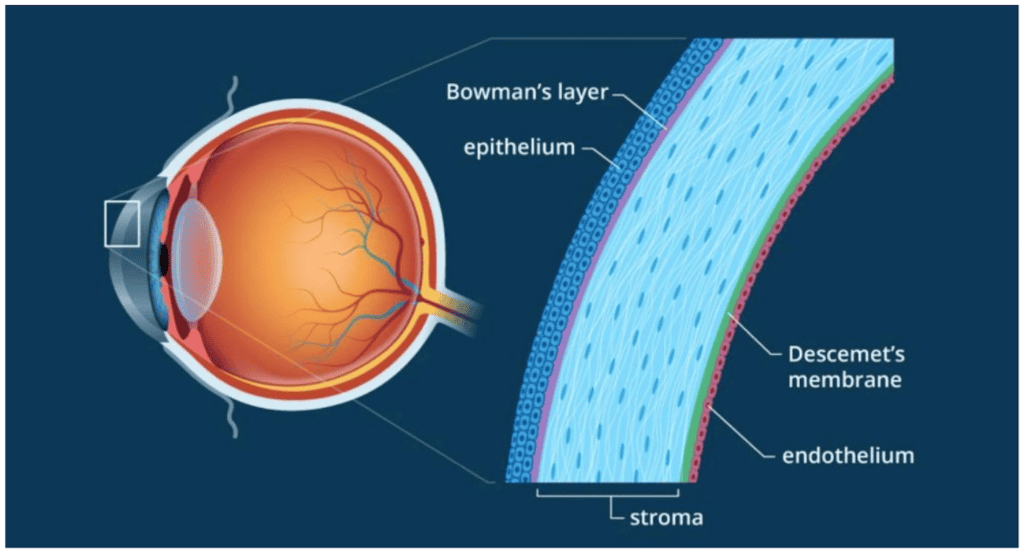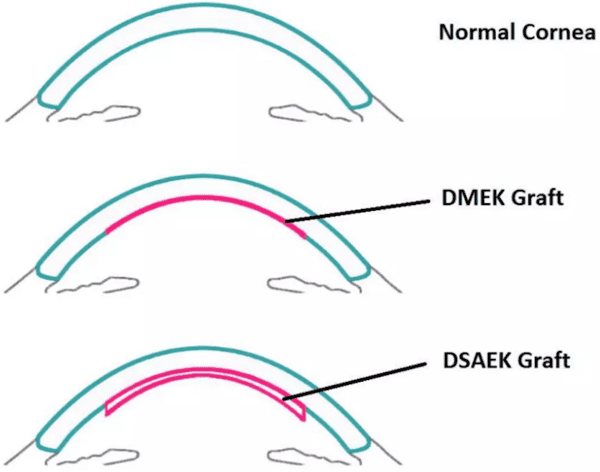What is a Corneal Endothelial Transplant?
A cprneal endothelial transplant, also known as a Descement’s Stripping Endothelial Keratoplasty (DSEK) or Descemet’s Membrance Endothelial Keratoplasty (DMEK), is a surgical procedure to replace a damaged inner lining of the cornea (endothelium).

Why is a Corneal Endothelial Transplant Needed?
The corneal endothelium is responsible for maintaining the tranparency and clarity of the cornea by regulating its hydration levels. Damage to the corneal endothelium can result from factors such as Fuch’s endothelial dystrophy, corneal oedema, previous eye surgeries or trauma.
When the endothelial layer is damaged, the cornea may become swollen. leading to blurred vision, glare, and decreased visual acuity. A corneal endothelial transplant is performed to restore the normal functioning of the endothelium and improve vision.
The Transplant Procedure
Where required, the damaged endothelial layer is removed from the eye. Then a thin layer of healthy endothelial tissue from a donor cornea will be placed and secured in position using an air bubble.
After the surgery, you will be monitored for 1-2 hours to ensure stability. Eye drops will be prescribed to aid in healing and prevent infection. An eye patch or protective shield is worn overnight on the day of surgery.
Recovery and Expectations
Posturing: The transplant is held in place by an air bubble placed inside your eye. For this to be effective you will be asked to lie flat on your back the night after surgery and then for a further 1 to 3 days if required. 1 out of 5 people may need the air bubble re- inserted in the clinic to help attach the transplant.
Visual Recovery: Vision improvement after corneal endothelial transplant is usually gradual. Initially, your vision may be blurry or hazy, but it will improve over time as the cornea heals and the new endothelial cells settle into place.
Long-Term Care: After the transplant, regular follow-up visits will be necessary to monitor your progress, remove sutures if used, and adjust medications.

Potential Risks and Complications
Corneal endothelial transplants are typically much safer than full corneal transplants but it is important to be aware of potential risks and complications. These include infection, rejection of the transplanted tissue, increased eye pressure (glaucoma), swelling or detachment of the donor tissue, transient or persistent blurry vision and cataract formation.
Remember, the risks vary depending on individual circumstances, and I will discuss these with you in detail before the procedure.
A corneal endothelial transplant is a remarkable surgical procedure that can restore vision and improve your quality of life. Dr Brett Drury is a corneal specialist who performs all types of corneal transplants at Outlook Eye Specialists.
